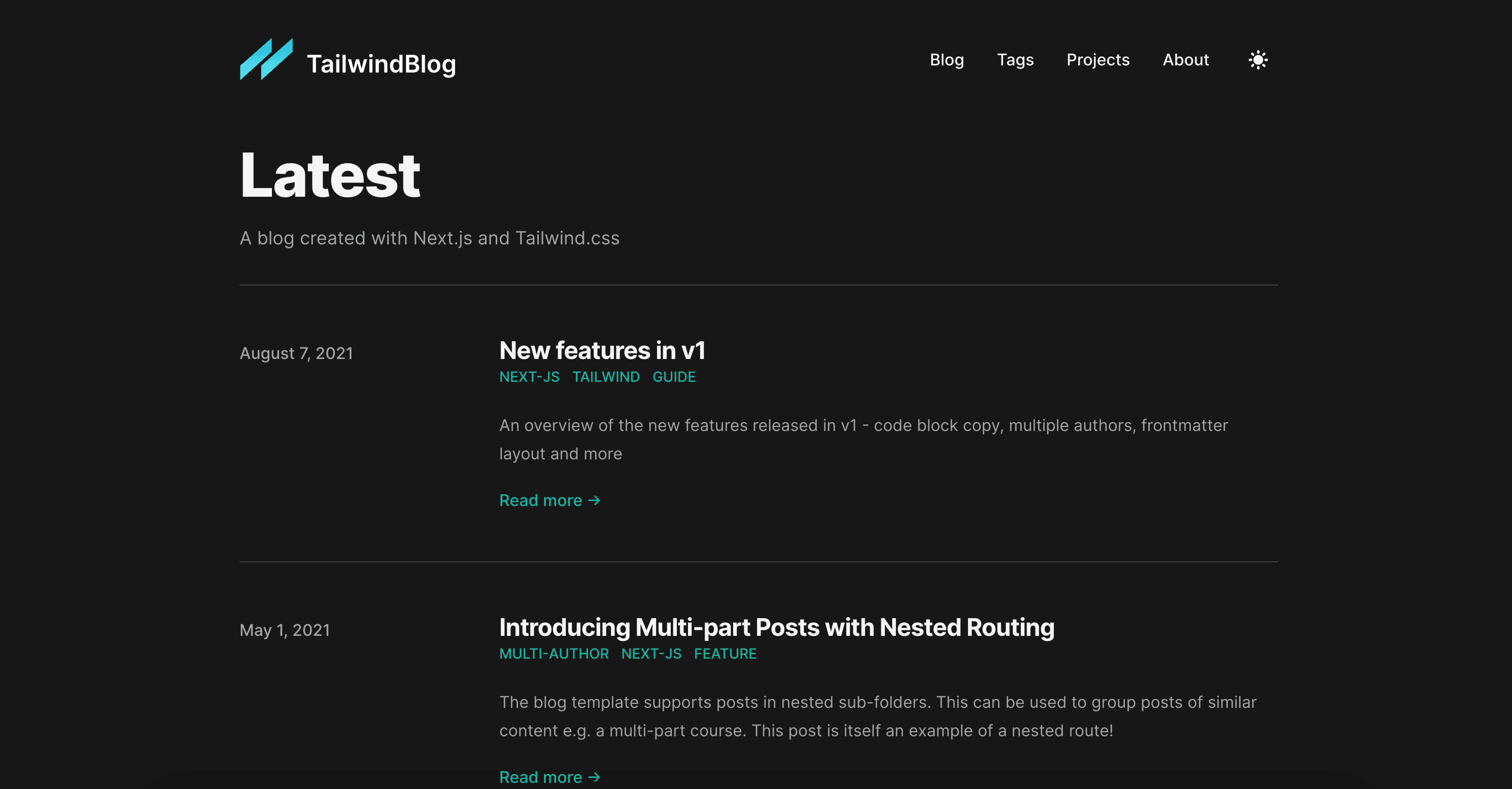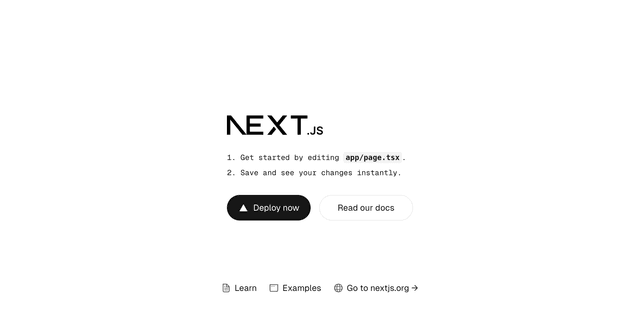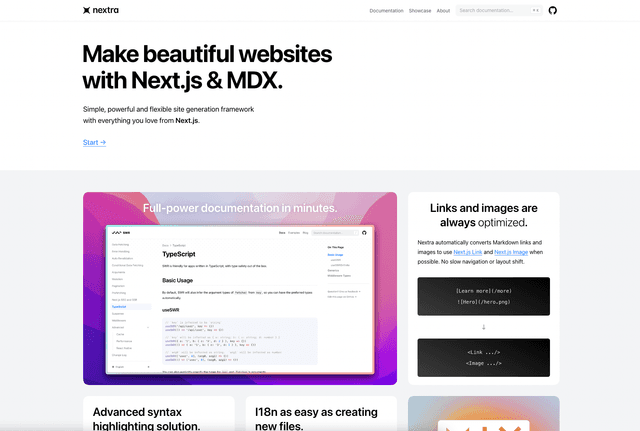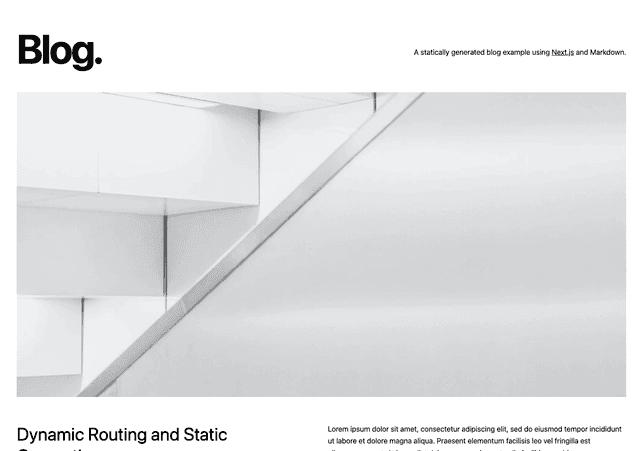Tailwind CSS Blog
Next.js blog using Markdown for content.

Features
- Easy styling customization with Tailwind 3.0 and primary color attribute
- Near perfect lighthouse score - Lighthouse report
- Lightweight, 45kB first load JS, uses Preact in production build
- Mobile-friendly view
- Light and dark theme
- Self-hosted font with Fontsource
- Supports plausible, simple analytics and google analytics
- MDX - write JSX in markdown documents!
- Server-side syntax highlighting with line numbers and line highlighting via rehype-prism-plus
- Math display supported via KaTeX
- Citation and bibliography support via rehype-citation
- Automatic image optimization via next/image
- Flexible data retrieval with mdx-bundler
- Support for tags - each unique tag will be its own page
- Support for multiple authors
- Blog templates
- TOC component
- Support for nested routing of blog posts
- Newsletter component with support for mailchimp, buttondown, convertkit, klaviyo and revue
- Supports giscus, utterances or disqus
- Projects page
- Preconfigured security headers
- SEO friendly with RSS feed, sitemaps and more!
Sample posts
- A markdown guide
- Learn more about images in Next.js
- A tour of math typesetting
- Simple MDX image grid
- Example of long prose
- Example of Nested Route Post
Quick Start Guide
- TypeScript and Contentlayer (alpha)
or JS (official support)
or with TypeScript (community support)
- Personalize
siteMetadata.js(site related information) - Modify the content security policy in
next.config.jsif you want to use any analytics provider or a commenting solution other than giscus. - Personalize
authors/default.md(main author) - Modify
projectsData.js - Modify
headerNavLinks.jsto customize navigation links - Add blog posts
- Deploy on Vercel
Installation
Development
First, run the development server:
or
Open http://localhost:3000 with your browser to see the result.
You can start editing the page by modifying pages/index.js. The page auto-updates as you edit the file.
Extend / Customize
data/siteMetadata.js - contains most of the site related information which should be modified for a user's need.
data/authors/default.md - default author information (required). Additional authors can be added as files in data/authors.
data/projectsData.js - data used to generate styled card on the projects page.
data/headerNavLinks.js - navigation links.
data/logo.svg - replace with your own logo.
data/blog - replace with your own blog posts.
public/static - store assets such as images and favicons.
tailwind.config.js and css/tailwind.css - contain the tailwind stylesheet which can be modified to change the overall look and feel of the site.
css/prism.css - controls the styles associated with the code blocks. Feel free to customize it and use your preferred prismjs theme e.g. prism themes.
components/social-icons - to add other icons, simply copy an svg file from Simple Icons and map them in index.js. Other icons use heroicons.
components/MDXComponents.js - pass your own JSX code or React component by specifying it over here. You can then call them directly in the .mdx or .md file. By default, a custom link and image component is passed.
layouts - main templates used in pages.
pages - pages to route to. Read the Next.js documentation for more information.
next.config.js - configuration related to Next.js. You need to adapt the Content Security Policy if you want to load scripts, images etc. from other domains.
Post
Frontmatter
Frontmatter follows Hugo's standards.
Currently 7 fields are supported.
Here's an example of a post's frontmatter:
Compose
Run node ./scripts/compose.js to bootstrap a new post.
Follow the interactive prompt to generate a post with pre-filled front matter.


